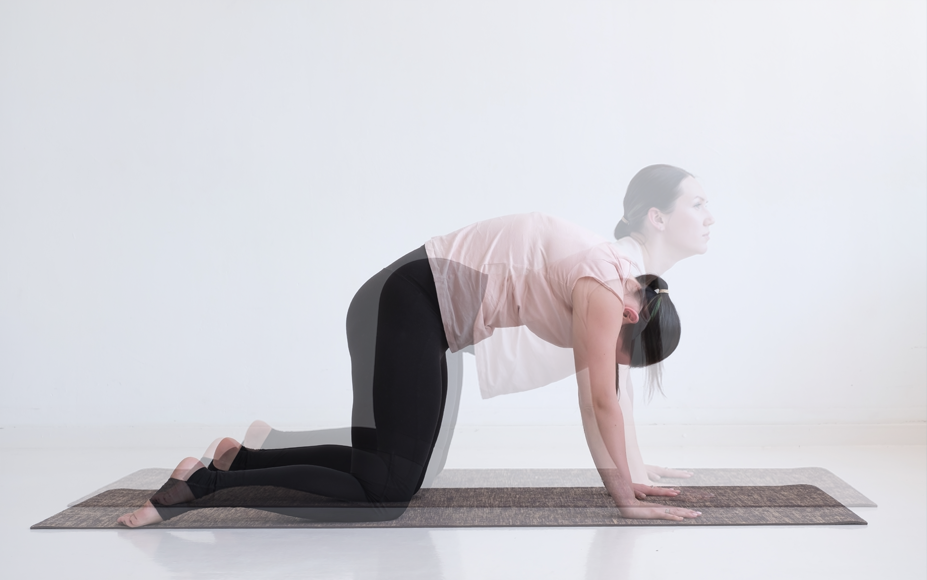The Ultimate Guide to Physio Exercises to Improve Your Posture and Reduce Pain
Especially when Working from Home

If you're someone whose job allows the flexibility of working from home, then you are probably no stranger to back pain. Being stuck in the same position for hours on end can be taxing on the body, leading to poor posture and lower back pain.
The good news is that there is still hope!
ProTouch Physical Therapy has been in the industry for many years and has helped countless work-from-home patients overcome the challenges that come with having to remain seated for long periods.
In this ultimate guide to physiotherapy exercises, we will provide practical ways to strengthen your muscles, maintain good posture while working from home, and get the pain relief you need.
How Working from Home Can Lead to Chronic Pain and Bad Posture
Since the COVID-19 pandemic, terms like "work from home," "home office," and "hybrid work model" have become more commonplace. Even though restrictions have long been lifted, the benefits of working from home have become more widely adopted.
One of the leading causes of upper back, lower back, and neck pain is poor work setup. When your spine, wrists, and other parts of the body do not have adequate support, you end up slouching, which can lead to pain and discomfort.
Even with an ergonomic setup, the dangers of remaining in one position for extended periods are great. Extending certain muscles for long periods can cause pain, which is why it is important to adopt good posture habits and exercise regularly to ease those joints and relieve strain.
The Ultimate Guide to Physiotherapy Exercises to Improve Posture and Get Relief from Pain
Fortunately, you can get some relief in your muscles and joints with these exercises that are designed to promote proper posture and relieve muscle tension and pain in various parts of the body.
Exercise 1: Loosen Up the Mid Back Using a Foam Roller or Towel
Extending your back over a foam roller is a fantastic way to get some much-needed relief. Here is how to do this exercise:
- Lie flat on the ground with the roller or towel placed on your lower back.
- Lean back over the roller, taking deep breaths.
- Extend your back as far as you can comfortably, pause, and return to a seated position.
- Repeat this two or three times.

Exercise 2: Get Back Pain Relief with the Cat Cow
As funny as this exercise sounds, it's great for lubricating spinal joints and stretching muscles around the spine. To do this exercise, you will need to engage your back and core muscles. Here's how:
- Start on your hands and knees.
- First, allow your stomach to sink downward while you look up. This is the cow position.
- Then, arch your back up and look down toward your belly button. You should feel your neck muscles stretch in this position.
- Hold each pose as long as possible and repeat both positions about 15 times.

Exercise 3: Stretch Those Hips!
Muscle strain can also occur in your hips if you spend large amounts of time seated. Try this exercise to reduce tightness in your hip flexors.
- Begin in a kneeling position and place both knees on the floor. If you want to do a little extra you can add your arms into this stretch.
- Clench your glutes to move your hip out and to the side as you lean in the opposite direction.
- Lean to the side, stretching out your back and side hip. You should feel the muscles in the leg that and hip start to stretch. Repeat for both sides as needed.

Exercise 4: Shoulder Blade and Chest Stretch
Sore shoulders commonly occur due to poor posture in those who work from home. This exercise can help to stretch these muscles to provide effective relief.
- Sit up straight with your back against a wall or chair.
- Pull your arm with your other hand stretching our your shoulder blades, and repeat for both arms.
- For your back... Clasp your hands behind your back, interlacing your fingers. Gently lift your arms away from your back, keeping your shoulders relaxed.
- Hold each exercise for 30 seconds, then release and repeat if needed.

Exercise 5: Stretch to Alleviate Neck Pain
Staring at a screen all day can lead to slouching, placing strain on the muscles of the neck and shoulder. The neck stretch is a fantastic exercise to help with posture correction and pain alleviation.
- To begin this exercise, tilt your head so that your ear is at one of your shoulders.
- Use the hand that's on the same side as that shoulder to gently grab the side of your head.
- Then, using your hand, pull your head so that your neck muscles stretch.
- Hold this position for at least 20 seconds before repeating it on the other side.
- Do this exercise twice on either side, then roll your neck in a 360 motion to loosen up, slowly.

Tips to Help Prevent Pain
Whether you suffer from chronic back pain or wish to prevent your muscles from being strained, here are a few tips that you can use to promote health and wellness:
- Take regular breaks. Sitting for prolonged periods can cause many health issues. Make sure that you are taking time regularly throughout the day to walk around or stretch before coming back. Take five minutes to stretch after every 30 minutes spent at your desk.
- Alternate between sitting and standing. Switching between sitting and standing can also help to alleviate the issues that lead to back pain. You can purchase a standing desk or simply remember to stand up regularly throughout the workday.
- Maintain a healthy diet. When you consume foods that are designed to reduce inflammation, you can help to alleviate back pain. Go for leafy greens and anti-inflammatory foods, such as ginger and turmeric.
Frequently Asked Questions: Home Office Setup
1. I have an ergonomic home office setup. Why do I still have back pain?
The truth is that an ergonomic office setup does not guarantee that you will be free from pain. A lack of physical activity can contribute to back pain. Make sure that you are taking breaks to stretch, doing the exercises we mentioned above, and alternating between sitting or standing throughout the day to prevent back pain.
2. Does physiotherapy correct posture?
Yes, it does! Our physiotherapists combine stretching, a hands-on treatment plan, and exercises that can help correct posture and alleviate pain.
3. When should you see a physiotherapist for lower back pain?
If you have chronic pain that does not settle within two weeks or does not settle, despite rest and home care, it's time to come to our facility. Suppose you notice pain that radiates to your legs, affects your bowel or bladder control, or causes numbness. In that case, seek help immediately.
4. Can physiotherapy address years of bad posture?
Absolutely! We will help to address posture-related issues, no matter how long it has been. Replacing bad posture habits with good ones is also part of our strategy to help address posture problems.
ProTouch Physical Therapy Is Here to Help!
If you need to improve your posture and address low back pain, then you can turn to ProTouch Physical Therapy for reliable services. We can help you incorporate strengthening exercises into your daily routine and provide personalized guidance on how to maintain the right posture while sitting.
Whether you are actively struggling with lower back pain or want to prevent any strain after taking on a new work-from-home job, you can turn to us for reliable guidance.
To learn more about our physical therapy clinic talk with us today at (908) 325-6556. If you have a more serious concern about your well being you can book an appointment, for any pain issues or concerns you are having.



